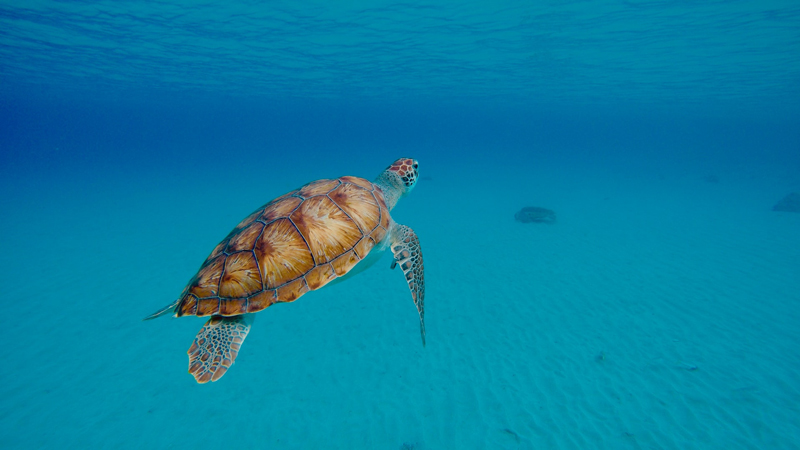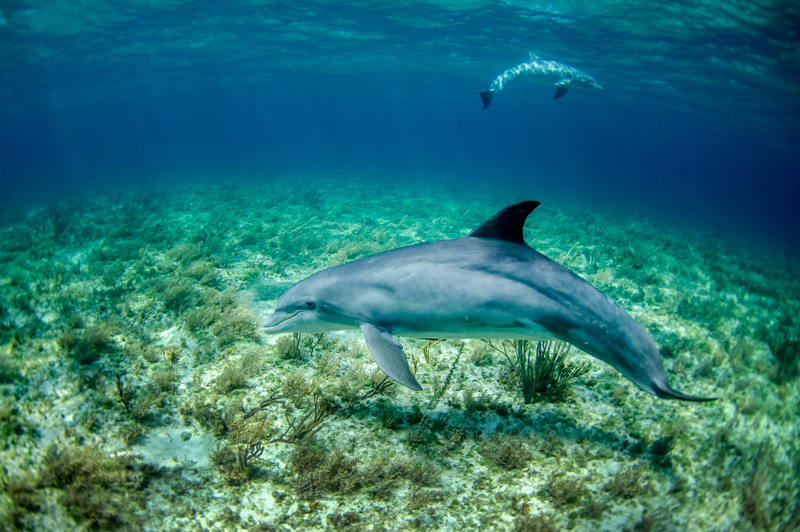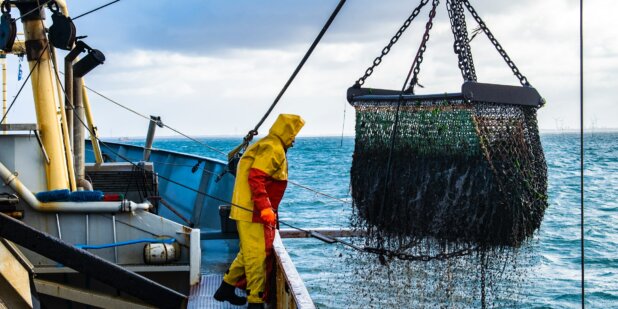- About
- Topics
- Story
- In-Depth
- Picks
- Opinion
- News
- Donate
- Signup for our newsletterOur Editors' Best Picks.Send
Read, Debate: Engage.
Sharks, whales and turtles are about to embark on a journey from Isla del Coco (Cocos Island), some 370 miles away from the beaches of Costa Rica - one of the main sanctuaries for marine species in the Pacific. But a dangerous path awaits them.

© Stephan Van De Schootbrugge
These species will make a journey of about 500 miles to the Galapagos Islands, in Ecuador, another protected sanctuary. During the trip, they will have to dodge fishing boats (in some cases illegal), plastic pollution and changing temperatures. The species that arrive safely will have made the journey with remarkable precision, guided by an underwater mountain range that joins the two islands. Scientists now warn that protecting that route is as important as protecting its destination.
In response to these warnings, Costa Rica joined forces with the governments of Ecuador, Panama and Colombia to create a protected marine corridor of an unprecedented size in Latin America. During the United Nations summit on climate change (COP26), the governments announced the launch of a "Marine Biosphere Reserve" between Cocos Islands and the Galapagos Islands, covering an area of 500 thousand square meters.
In the case of Costa Rica, the new reserve consists of an expansion of more than 50 thousand square meters in the Cocos Islands National Park and of 90 thousand square meters in the Submarine Mountains Management Area (the marine “highway”). Both will cover an area twice the size of the country’s continental territory. The task, however, is arduous. The country began consultations on how to execute the expansion of the protected area amid a financial crisis in its National System of Conservation Areas (Sinac), which was worsened by the COVID-19 pandemic.
Controlling this area is an even more complex challenge due to the limited coastguard vessels and the distance from the mainland, explained Mónica Gamboa, a biologist at the scientific organization Costa Rica por Siempre.
Additionally, the fishing sector is not very pleased either and has expressed its opposition to the expansion of this national park. Due to the distance from the coast, it is vital for authorities to engage with the industrial sector (tuna vessels, purse seines and longlines), said Gamboa. The government recently officialised the new marine reserve via executive decree, after negotiations with fishermen.
Historically, protecting the sea has been the main weakness of the Costa Rican conservation model: around 26 percent of its continental territory is protected, but until this year only 3 percent of its marine territory enjoyed some degree of protection. Now, with the new reserve, around 30 percent of the country’s marine territory is under protection. Enforcing that protection will now be Costa Rica’s main challenge.
1,688 different species have been registered in the waters of the Pacific Ocean, of which 45 are found only in Cocos Island National Park - a sanctuary for marine species. Many of these animals are highly migratory. At least 21 species - including the hammerhead shark, bottlenose dolphin and green turtle - move between the Galapagos and Cocos Islands, according to a recent study by the University of Costa Rica (UCR) and the University of San Francisco de Quito (USFQ).
Migrations to nearby islands such as Malpelo (Colombia) and Coiba (Panama) have also been documented, which is why the four islands are united in the Biosphere Reserve project. Animals move between these islands because an underwater mountain range unites them. When cold currents (loaded with nutrients) collide with the mountain range, the nutrients rise to the surface and form a small oasis, explains the study by UCR and USFQ. Both microorganisms and large species follow these paths, where they encounter threats such as overfishing, one of the main disturbances in this remote area.
 © NOA
© NOA
Some fishing gear - depending on its hooks or baits, for example - are illegal. But in other cases, overfishing is carried out legally. Costa Rica, for example, still allows hammerhead sharks to be unloaded in its ports (although it does not allow them to be exported). In the seamounts near the island, illegal shark fishing and purse seine fishing for tuna are “the main threats,” according to a 2012 study by the MarViva Foundation. Costa Rica does not have purse seiners, so the entire fleet pressing the area is foreign.
Longline vessels - which use a long line filled with hooks - also reach seamounts, according to a different study conducted by the Fundación Amigos de la Isla del Coco. About 25 vessels are Costa Rican, but most are from three countries: China (377 vessels), Korea (198) and Japan (248). These generate significant pressure on migratory populations, said Gamboa of Costa Rica por Siempre.
Plastic pollution constitutes yet another threat along the way. UCR researchers have even found plastic in the digestive tracts of species in the area such as black marlin (Makaira indica) and lancetfish (Alepisaurius ferox). Climate change, additionally, poses a serious and even more mysterious threat, due to the lack of available data, according to Gamboa. "We are still in the infancy to understand what the effects of climate change will be on species and how they will affect their movement. We do not know if these species are going to seek colder waters, for example," said the researcher.
Despite the urgent need to protect this marine territory, it will certainly not be an easy task for Costa Rica. Firstly, supervision over the project will be complex. Ecuador and Costa Rica have different conditions for their management areas, so it is important that "highway" does not act as two different protected areas, explained Gamboa.
Costa Rica will have to watch over a territory more than 435 miles off its coast, with a reduced coastguard force. One possible solution to this issue is satellite technology. Costa Rica recently opened its fishing data to the Global Fishing Watch monitoring platform.
But above all, collaboration with the naval forces of neighbouring countries - Ecuador in particular - will be vital for adequate protection, added the biologist. In order to do this, the countries must sign cooperation agreements with clear rules, something that has yet to materialise.
Financing is yet another major challenge for the project. The Vice Minister of Waters and Seas of Costa Rica, Cynthia Barzuna, explained that the reserve will receive support from a financial fund (Fondo Azul por Siempre), with seed capital of $ 3.5 million. The money. which will be used for research, monitoring and adaptation to climate change,provides important assistance after the Costa Rican legislature cut the budget for protected areas by more than a third. Ecuador, on its part, announced that the expansion of its protected area in the Galapagos will be financed with the "largest debt-for-nature swap in history," without adding further details on the amount and administration of the funds.
While these challenges persist, Costa Rica's fishing sector has been pushing in the other direction. Chambers and industrial longline associations even presented four appeals against the project. The longline sector has stated that the project would reduce the capture of non-threatened species and they assured that the process has been not sufficiently participatory, despite having featured two representative organisations.
Vice Minister Barzuna assured that the new map proposed by the government takes into account suggestions from the fishing sector. "The existence of the polygons for the management of the use of tuna has been taken into account," she added.
While these conflicts persist, the populations of some threatened species - such as the hammerhead shark - continue to plummet. Every year, they will go out to no man’s land again, in transit to the next sanctuary.
